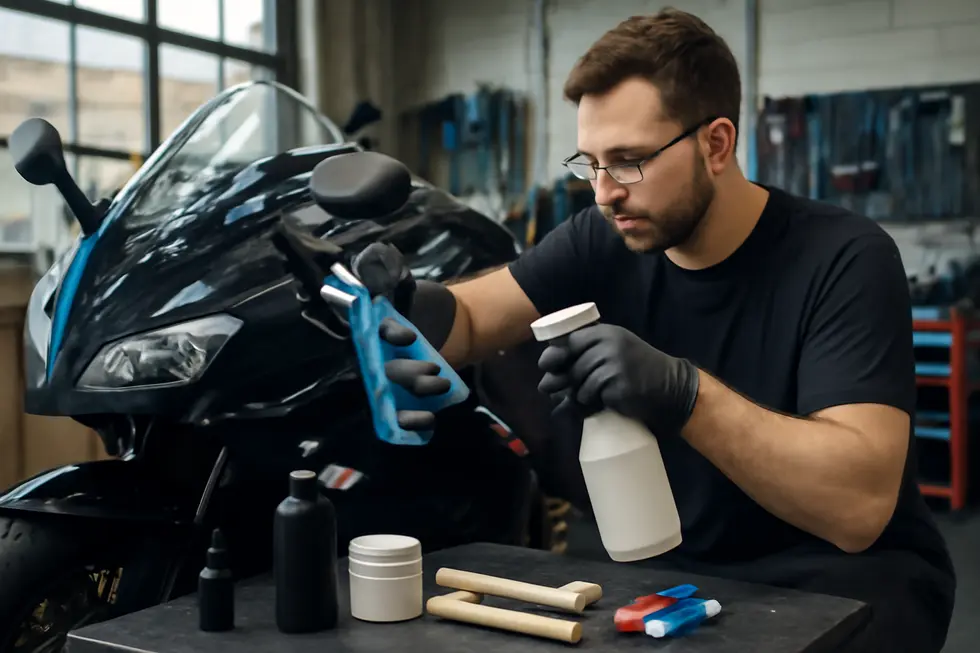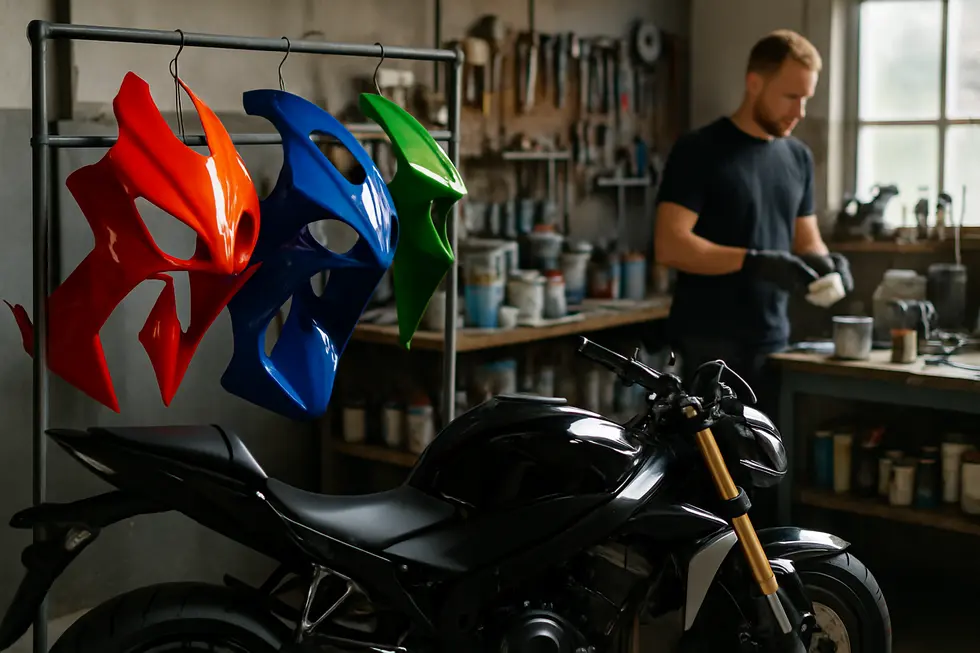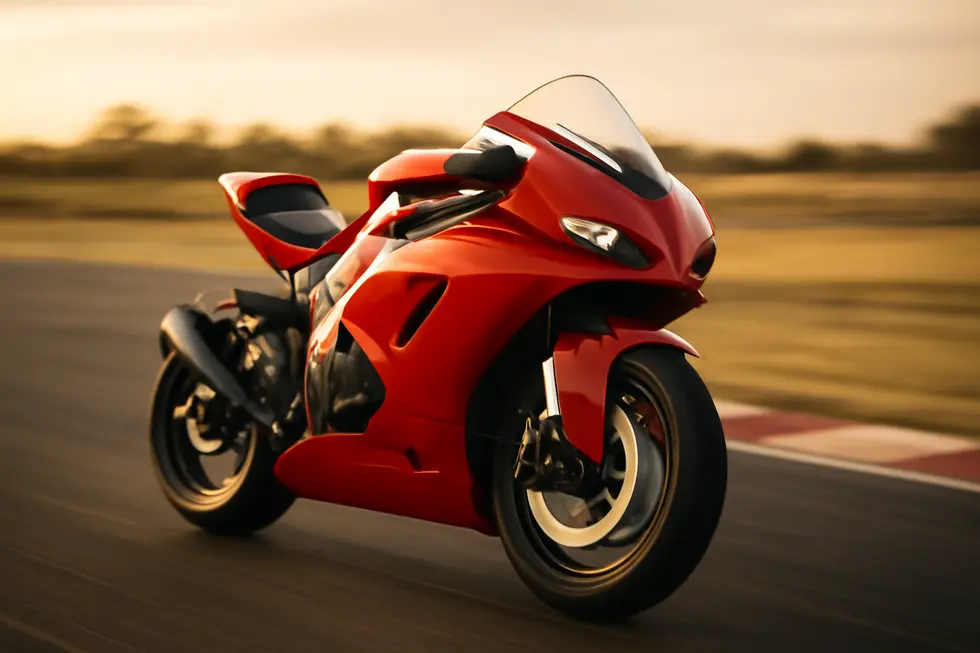Motorcycle Batwing Fairings: Strategic Insights for Business Owners
October 3, 2025 | by summitfairings
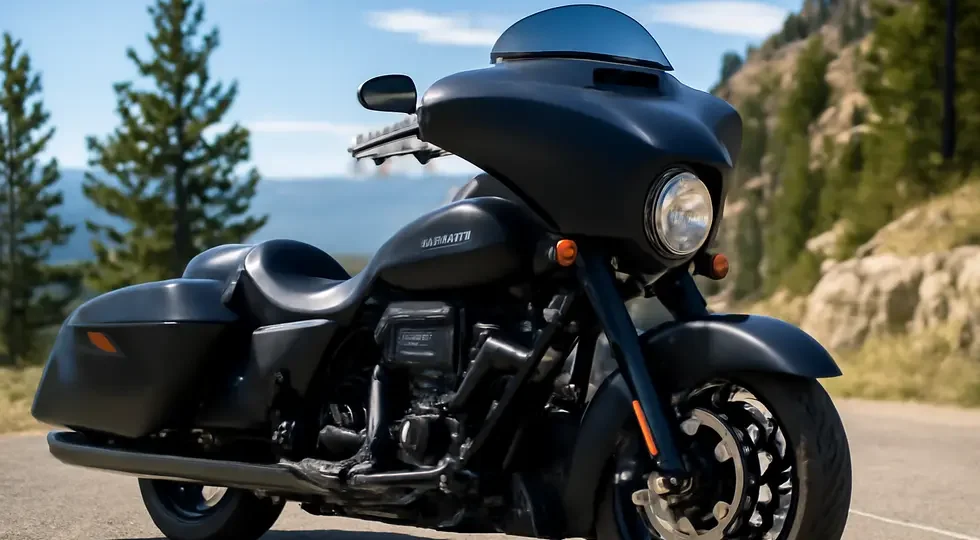
Introduction
Motorcycle batwing fairings have become a cornerstone component in the touring motorcycle industry, combining functional aerodynamics with distinctive styling. Recognized predominantly through Harley-Davidson’s iconic touring models, these fairings serve dual roles: enhancing rider comfort by reducing wind buffeting and establishing a strong visual identity that resonates with enthusiasts. For business owners seeking to capitalize on this niche, understanding the intricate design, material choices, and market-specific variations is critical. This article examines the essential aspects of batwing fairings, including their key usage in Harley-Davidson motorcycles, compatibility issues across other brands like Yamaha, construction materials, available customization accessories, and the market challenges faced. Each chapter builds a comprehensive understanding that equips decision-makers to better serve, cater, and innovate within the motorcycle fairing market.
Tables of Contents
Chapter 1: Introduction to Motorcycle Batwing Fairing Design and Functionality
- Streamlined Aerodynamics and Enhanced Rider Comfort: The Core of Batwing Fairing Design
- From Heritage to Highway: The Enduring Function and Style of the Motorcycle Batwing Fairing
Chapter 2: Motorcycle Batwing Fairing Use in Harley-Davidson Touring Models
- Cutting-Edge Aerodynamics and Smart Integration Shaping Harley-Davidson Batwing Fairings
- The Multifaceted Impact of Batwing Fairings on Harley-Davidson’s Economy and Riding Culture
Chapter 3: Motorcycle Batwing Fairing Variations and Yamaha Compatibility
- Innovations in Batwing Fairing Design and Challenges in Yamaha Integration
- Navigating Yamaha Batwing Fairing Compatibility and Adaptation Challenges
Chapter 4: Materials and Construction of Motorcycle Batwing Fairings
- Essential Materials Crafting Durable and Stylish Motorcycle Batwing Fairings
- Innovative Materials and Functional Craftsmanship in Motorcycle Batwing Fairings
Chapter 5: Accessories and Customization Options for Motorcycle Batwing Fairings
- Cutting-Edge Technologies and Essential Accessories Elevating Batwing Fairing Performance
- Shaping Identity and Innovation: The Market Dynamics and Cultural Influence of Batwing Fairing Customizations
Chapter 6: Challenges and Market Considerations for Motorcycle Batwing Fairings
- Navigating Design Complexities: Fit, Aerodynamics, and Durability in Batwing Fairings
- Balancing Rider Expectations and Market Competition in Batwing Fairing Design
Chapter 1: Introduction to Motorcycle Batwing Fairing Design and Functionality
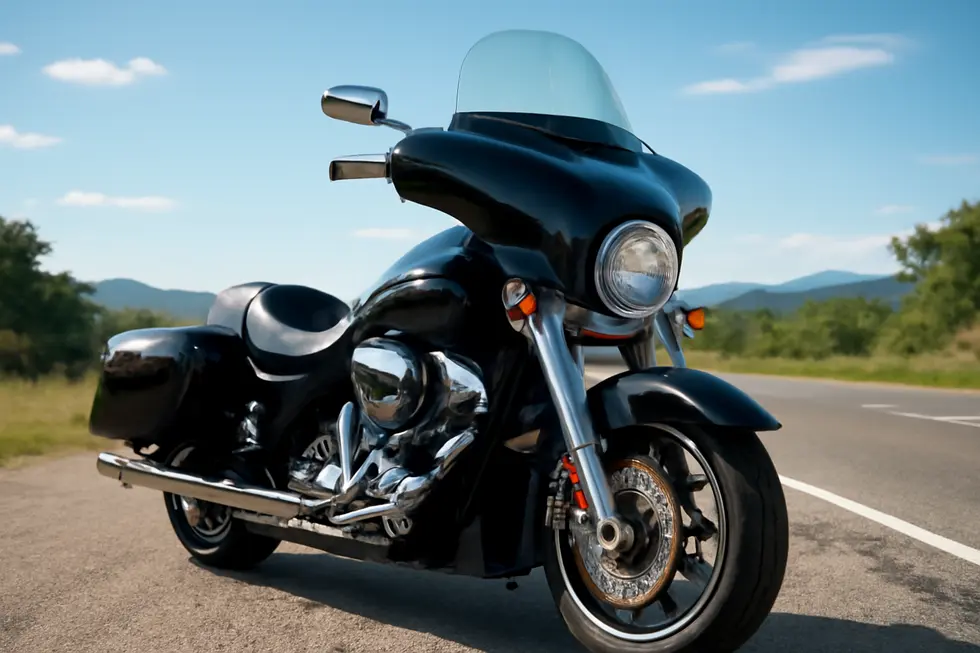
1. Streamlined Aerodynamics and Enhanced Rider Comfort: The Core of Batwing Fairing Design
The motorcycle batwing fairing is a hallmark of touring motorcycles, combining striking aesthetics with purposeful engineering to elevate both performance and rider experience. Central to its design is an aerodynamic profile that directs airflow smoothly around the rider, mitigating wind buffeting that commonly causes fatigue during long rides. This wide, curved shape—reminiscent of a bat’s wingspan—not only defines the fairing’s signature look but fundamentally reduces air resistance and turbulence for improved stability at higher speeds.
Typically crafted from durable yet lightweight materials such as fiberglass or ABS plastic, the batwing fairing balances strength with weight efficiency, ensuring it does not negatively impact the motorcycle’s handling dynamics. Its glossy finish adds to the visual appeal while serving as a resilient exterior against environmental wear.
An integral feature is the windshield, often tinted, which works in harmony with the fairing’s contours to redirect wind over the rider’s head and upper torso. This combination significantly decreases wind noise and pressure, allowing for greater focus and comfort across extended journeys. The fairing’s thoughtful design also accommodates functional elements such as integrated cutouts or mounts for audio systems and instrumentation, enabling riders to accessorize without disrupting the wind flow or adding vibration.
Mounting systems are precisely engineered for a snug, secure fit tailored to specific motorcycle models, primarily those favored for touring. This ensures that the fairing maintains optimal alignment and effectiveness, preventing unwanted vibrations or gaps that could impede aerodynamic benefits.
By seamlessly blending functional wind protection with stylistic distinction, the batwing fairing stands as a practical yet iconic component for touring motorcycles. Its design ethos centers on enhancing rider comfort and control while amplifying the cruiser’s visual presence. For enthusiasts seeking both performance and classic style, the batwing fairing remains an essential element that defines the touring riding experience.
Explore more about the range and customization of motorcycle fairings at Summit Fairings.
2. From Heritage to Highway: The Enduring Function and Style of the Motorcycle Batwing Fairing
The motorcycle batwing fairing stands as a symbol of both engineering ingenuity and cultural identity, especially within the touring motorcycle realm. Its broad, wing-like shape serves a crucial functional purpose—chiefly, wind protection that dramatically improves rider comfort on extended journeys. By channeling airflow around the rider’s upper body and head, the fairing reduces wind buffeting and fatigue that commonly plague high-speed travel. A carefully sized windshield atop the batwing further refines this aerodynamic effect, illustrating a thoughtful balance of form and function.
Beyond aerodynamic benefits, some batwing fairings discreetly incorporate small storage compartments. Though modest in capacity, these compartments offer convenient spaces for essentials like sunglasses or toll tickets, subtly enhancing touring practicality without compromising sleek aesthetics. This thoughtful inclusion underscores the fairing’s dual role as both a functional component and a style statement.
The batwing fairing’s iconic silhouette traces back to a pivotal moment in motorcycle design history with the 1969 introduction of a fork-mounted full front fairing. This innovation established a new standard in rider comfort and set the stylistic tone for the Harley-Davidson touring lineup. Subsequent decades witnessed continued evolution, including the addition of frame-mounted fairings to improve handling in crosswinds—demonstrating how evolving rider needs and technological advances influence design variations.
Today, the juxtaposition between classic fork-mounted batwing fairings and newer frame-mounted designs embodies both tradition and progress within motorcycle culture. These fairings remain a defining feature, marrying striking visual presence with practical advantages that cater to touring riders’ demands. The evolution of the batwing fairing is a testament to its enduring relevance and the motorcycle community’s appreciation for innovations that honor heritage while enhancing rider experience.
For those interested in exploring the rich variety and custom options available for these distinctive fairings, discovering comprehensive choices in motorcycle fairings can provide additional insight into how this iconic design continues to adapt and thrive.
Chapter 2: Motorcycle Batwing Fairing Use in Harley-Davidson Touring Models
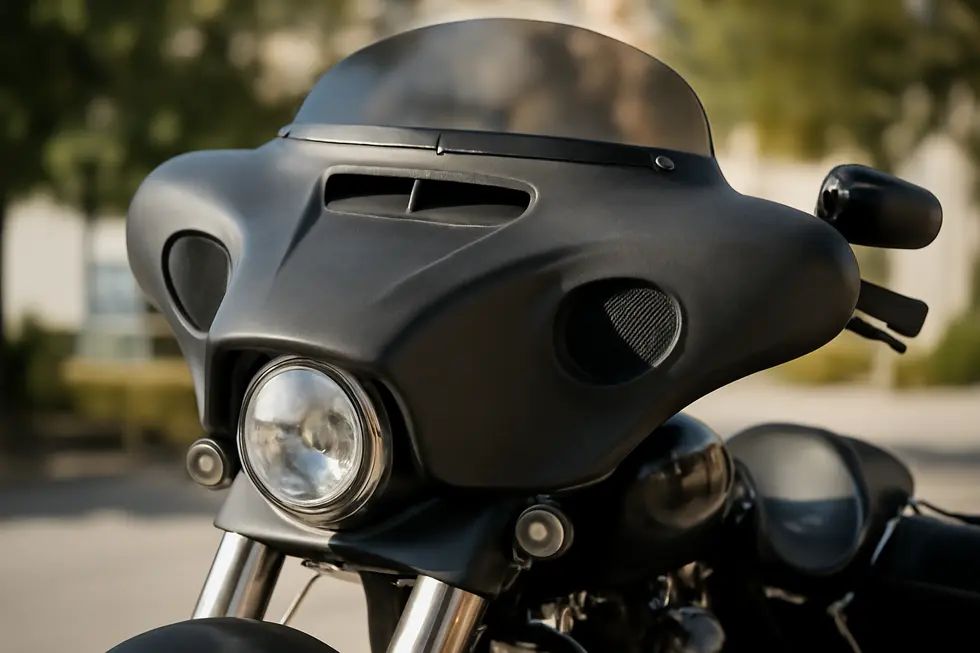
1. Cutting-Edge Aerodynamics and Smart Integration Shaping Harley-Davidson Batwing Fairings
Harley-Davidson’s Batwing fairing has transformed into a high-tech component that goes far beyond its iconic aesthetic. Through advanced aerodynamic engineering, primarily driven by computational fluid dynamics (CFD), the fairing’s design continuously evolves for superior airflow management. By simulating airflow at various speeds, engineers identify turbulence hotspots and buffeting zones, enabling precise refinements that minimize wind resistance and dramatically improve rider comfort. Recent models show reductions in helmet buffeting by up to 60%, underscoring this data-driven approach’s effectiveness.
Wind-tunnel testing further refines these innovations, validating CFD results under controlled conditions and pairing them with rigorous real-world road testing. This iterative process delivers exceptional stability even at highway speeds and significantly reduces windblast for both rider and passenger. The synergy between simulation and practical evaluation ensures the Batwing fairing consistently meets touring riders’ demands.
Material advancements complement aerodynamic gains. Modern Batwing fairings utilize lightweight yet durable composites that resist wear without adding unnecessary mass. Smart integration of LED lighting enhances safety and style, embedding lighting units seamlessly within the fairing’s distinct shape. These lights maintain clean visual lines while boosting visibility and reinforcing Harley-Davidson’s signature profile on the road.
Comfort improvements continue with taller, contoured windshields designed to channel airflow away from the rider’s head, thus lowering wind noise and fatigue during extended rides. These windshields work harmoniously with aerodynamic side deflectors, directing wind around the cockpit for a more serene experience.
Lastly, technology unfolds inside the fairing, where large color displays and infotainment systems blend classic cues with modern connectivity. Featuring advanced touchscreen interfaces and intuitive handlebar controls, these systems offer navigation, media, and communication options tailored for touring’s demanding environments—ensuring riders stay connected without sacrificing focus or style.
The evolution of Harley-Davidson’s Batwing fairing highlights a commitment to marrying timeless design with cutting-edge technology, producing an accessory that enhances every mile of a long journey. For enthusiasts interested in exploring more about motorcycle fairings, resources like Summit Fairings offer deep insights into aftermarket options and customization possibilities.
2. The Multifaceted Impact of Batwing Fairings on Harley-Davidson’s Economy and Riding Culture
Batwing fairings are more than stylistic features on Harley-Davidson touring motorcycles; they profoundly influence both economic factors and societal perceptions tied to the brand. The production of these fairings involves sophisticated engineering techniques such as computational fluid dynamics and extensive wind-tunnel testing. This precision in design enhances aerodynamics and rider comfort, positioning Harley-Davidson’s touring models as premium offerings. The technology and craftsmanship embedded in the fairings contribute to the higher cost and perceived value of these motorcycles, ultimately supporting their strong resale market. This enduring value benefits owners and dealers alike, reinforcing Harley-Davidson’s robust economic ecosystem.
Beyond economics, the batwing fairing stands as a powerful symbol within motorcycle culture. Its unique form, moving in sync with the handlebars, has become emblematic of Harley-Davidson’s classic look. Enthusiasts often identify deeply with this aesthetic, seeing it as a connection to the brand’s storied heritage and tradition of open-road freedom. The fairing’s role extends into practical realms, significantly reducing wind buffeting to make long-distance touring more enjoyable and accessible. This enhanced comfort enables a wider range of riders to embrace extended journeys, fostering community and camaraderie among touring enthusiasts.
From a performance standpoint, batwing fairings contribute to improved fuel efficiency by minimizing aerodynamic drag. This efficiency translates into smoother throttle control and potentially longer rides between refueling stops, making them not only visually iconic but functionally valuable. The fairing also protects vital motorcycle components from wind and debris, which can reduce maintenance costs and extend the bike’s longevity.
For riders and industry observers interested in exploring how fairings enhance motorcycle performance and style, a comprehensive source on varied fairing options and their benefits is extremely useful. This interplay of design, cultural significance, and economic influence underscores the batwing fairing’s role as a cornerstone of Harley-Davidson’s touring experience.
For further insights into motorcycle fairings and their impact, visit Explore the best motorcycle fairings at Summit Fairings.
Chapter 3: Motorcycle Batwing Fairing Variations and Yamaha Compatibility
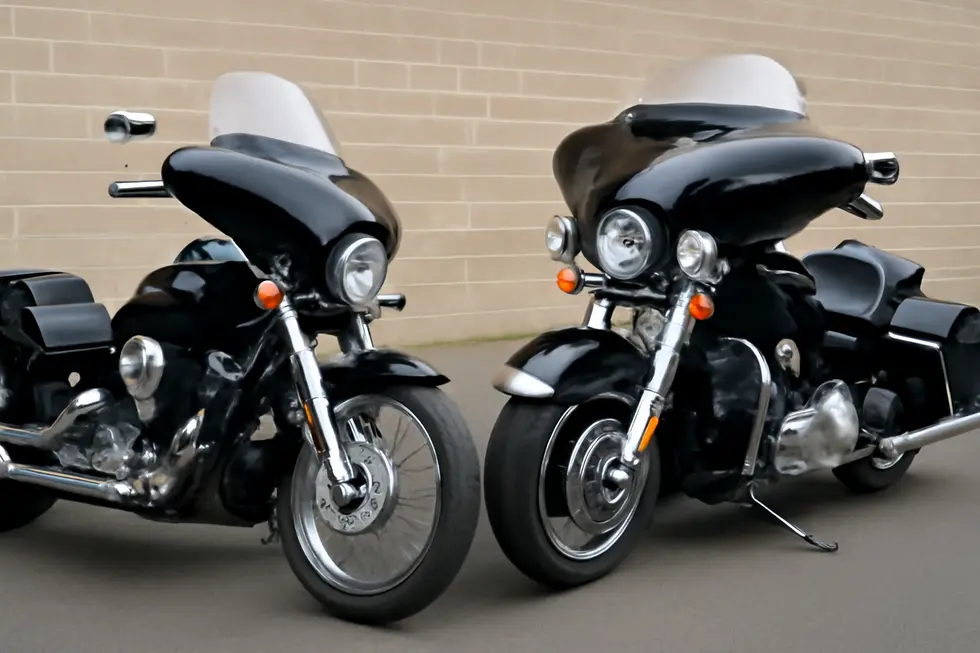
1. Innovations in Batwing Fairing Design and Challenges in Yamaha Integration
Motorcycle batwing fairings have evolved significantly, balancing cutting-edge materials with aerodynamic precision to improve rider experience and bike aesthetics. Originally crafted from fiberglass, modern iterations predominantly use ABS plastic. This material choice delivers essential durability and flexibility, resisting impact and weathering while maintaining a lightweight profile. Such advancements enable fairings to endure daily riding conditions while supporting customization, making them easier to repaint or modify.
Design evolution has embraced computational fluid dynamics and wind-tunnel testing strategies to sculpt fairings that effectively manage airflow, significantly reducing wind buffeting for riders during extended trips. These aerodynamic refinements are critical for touring motorcycles, where rider comfort directly influences ride quality. Beyond basic wind protection, the design ethos of batwing fairings incorporates practical integrations like storage pouches and accessory mounts, ensuring enhanced utility and convenience.
Customization remains a cornerstone of batwing fairing appeal. Riders take advantage of personalized color schemes, finishes, and incorporated logos to express their unique style. This blend of form and function reinforces the fairing’s iconic status, allowing it to serve not just as a protective component but also as a defining aesthetic element.
Yamaha’s adoption of batwing-style fairings follows a different path. Unlike Harley-Davidson’s factory-backed options, Yamaha riders typically rely on the aftermarket for compatible batwing designs. This approach opens doors to innovative custom solutions but also presents challenges in perfect fitment and integration. Yamaha’s diverse cruiser and touring models often require tailor-made fairings or modification of existing designs to match frame geometry and mounting points.
These complexities highlight the importance of precision in engineering and adaptation when bringing batwing fairings into Yamaha’s lineup. Riders committed to this style frequently pursue specialized fabrication or seek parts designed specifically with Yamaha’s platform in mind, ensuring performance and aesthetic coherence.
For enthusiasts interested in exploring these variations and options, resources specializing in motorcycle fairings offer a wide selection of compatible components and customization ideas to enhance Yamaha bikes without compromising their distinct character. For further insights, consider exploring comprehensive guides available on explore the best motorcycle fairings at Summit Fairings.
2. Navigating Yamaha Batwing Fairing Compatibility and Adaptation Challenges
Yamaha motorcycles present unique demands when it comes to selecting and fitting batwing fairings. Unlike Harley-Davidson, which offers a wealth of model-specific fairings, Yamaha’s lineup requires greater caution due to the more limited and varied options available. Certain models, like the Yamaha Road Star, have batwing fairings expressly designed for their frame, mounts, and aesthetic lines. These dedicated fairings typically fit snugly without modification, but they do not transfer well to other Yamaha models, underscoring the importance of choosing based on precise model compatibility.
For some Yamaha cruisers and touring bikes, such as the XV 1900 Midnight Star, fairings are less standardized and rarer in the market. This scarcity leads riders to consider either aftermarket products designed for broad fitment or custom modifications. These modifications often become necessary to align the fairing’s mounting points with the motorcycle’s frame and to ensure stability at speed. Secure installation is crucial—not just for structural integrity but also to maintain wind deflection efficiency and rider comfort.
Adapting batwing fairings across Yamaha models can also bring functional challenges. Improper fitment can interfere with essential components like headlights, turn signals, or hand controls, risking both safety and legal compliance. In some cases, riders need to adjust wiring or customize lighting arrangements to preserve visibility and roadworthiness. Additionally, the choice of material—fiberglass versus ABS plastic—can influence ease of adaptation, durability, and weight, affecting both handling and the motorcycle’s visual appeal.
Thus, Yamaha batwing fairings demand a nuanced approach, balancing precision fitment with individual customization needs. Riders benefit by selecting fairings tailored to their specific model and by anticipating installation adjustments. This careful consideration ensures the fairing enhances both the motorcycle’s distinctive style and touring functionality. Those interested in exploring the diverse fairing options and customization possibilities may find valuable insights through resources like the Summit Fairings blog, a reputable source that covers a broad range of motorcycle fairing styles and applications.
Chapter 4: Materials and Construction of Motorcycle Batwing Fairings
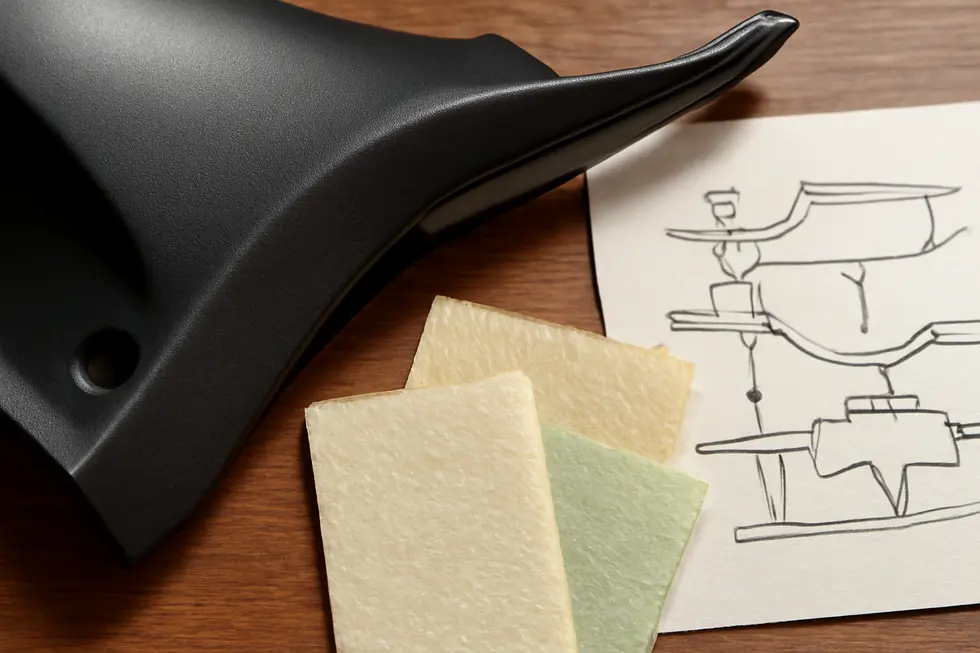
1. Essential Materials Crafting Durable and Stylish Motorcycle Batwing Fairings
Motorcycle batwing fairings owe their blend of durability, aerodynamic performance, and iconic styling to the careful selection of materials used in their construction. Foremost among these is ABS plastic—a thermoplastic polymer prized for its impact resistance, toughness, and weatherproof qualities. ABS maintains its shape and structural integrity under a variety of conditions, making it an ideal choice for fairings that must endure exposure to sun, rain, and road debris during extended rides. This material also serves as a reliable foundation for customizations and paint coatings due to its smooth surface and resilience.
Complementing ABS in some fairing assemblies are stainless steel components, typically found in trim pieces or structural reinforcements. Stainless steel’s corrosion resistance and polished finish add both functional strength and a refined visual touch. These metal accents contribute to the fairing’s longevity and help secure elements like windshield mounting brackets and decorative trims.
Speaking of windshields, transparent components integrated into batwing fairings usually employ polycarbonate or acrylic plastics. These materials are chosen for their optical clarity and impressive durability. Polycarbonate stands out for its exceptional impact resistance, crucial for withstanding stones or debris encountered at high speeds. Acrylic, while slightly less impact-resistant, often offers sharper optical quality and scratch resistance. Together, these materials ensure the rider’s vision remains unobstructed while delivering additional wind and weather protection.
The combination of these materials not only underpins the functional performance of batwing fairings but also supports their distinctive aesthetic appeal. The toughness of ABS allows for complex, aerodynamic shapes that define the batwing’s signature silhouette. Meanwhile, metal trims and clear windshields add layers of refinement that appeal to touring enthusiasts seeking both protection and style. This thoughtful integration of materials underlines why batwing fairings remain a popular and enduring feature among cruiser and touring motorcycles.
For riders exploring these options, a wealth of customizable and compatible fairing choices can be found to match individual motorcycle models, ensuring both fit and finish balance functionality and visual impact. Discovering more detailed selections and material insights can be done through resources centered on high-quality motorcycle fairings.
2. Innovative Materials and Functional Craftsmanship in Motorcycle Batwing Fairings
The construction of motorcycle batwing fairings is a meticulous blend of material innovation and functional design that addresses both durability and rider experience. Central to most batwing fairings is high-quality ABS plastic, prized for its lightweight strength and resistance to the elements. This material choice balances robustness with the need to avoid excess weight, ensuring the fairing maintains its structural integrity under exposure to wind, rain, and road debris without burdening the motorcycle’s handling.
The hallmark batwing shape extends wide wing-like panels around the handlebars, creating a protective aerodynamic envelope that significantly reduces wind buffeting. Because the fairing turns with the handlebars, as seen in many Harley-Davidson touring models, it enhances rider control and engagement, allowing for intuitive steering response paired with effective wind deflection. These aerodynamic benefits translate into smoother, less-fatiguing rides, especially at highway speeds.
Beyond shape and material, functional integration defines modern batwing fairings. Many include pre-cut openings expertly sized for audio speakers, enabling riders to enjoy clear sound without sacrificing wind protection. The accompanying windshields, often customizable in height and tint, further tailor air management to rider preferences, enhancing comfort over long distances.
Mounting systems reflect advanced craftsmanship as well, with quick-detach mechanisms crafted from durable metals like CNC-machined aluminum paired with stainless steel hardware. This technology allows riders to remove or install the fairing swiftly without tools, simplifying maintenance and upgrades.
Complementary accessories extend the fairing’s utility and style. For example, custom-fit storage pouches made from UV-resistant vinyl contour seamlessly with the fairing’s shape, providing practical stowage while preserving the bike’s aerodynamic profile.
Through these carefully chosen materials and precision construction methods, motorcycle batwing fairings exemplify a harmonious fusion of style, protection, and rider-focused engineering. For those interested in exploring the diverse options and customizations available, resources offering comprehensive selections of motorcycle fairings can be invaluable.
Chapter 5: Accessories and Customization Options for Motorcycle Batwing Fairings
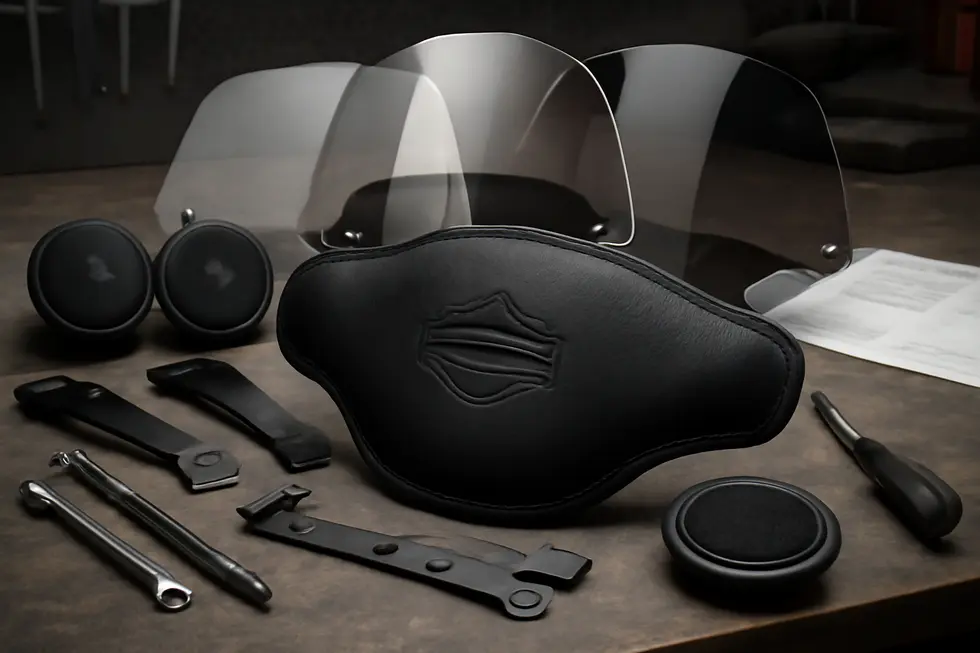
1. Cutting-Edge Technologies and Essential Accessories Elevating Batwing Fairing Performance
The motorcycle batwing fairing has evolved far beyond a mere stylistic statement, embracing advanced technologies and a broad range of accessories that enhance both functionality and rider experience. Recent innovations harness computational fluid dynamics to refine the aerodynamic profile, effectively reducing wind buffeting that typically challenges long-distance riders. This precision engineering not only maintains the fairing’s unmistakable silhouette but significantly improves comfort by smoothing airflow across the rider at highway speeds.
Integrated LED lighting has become a hallmark of modern batwing fairings, thoughtfully embedded to boost visibility while adding dynamic visual appeal. These lighting systems serve a dual purpose, enhancing safety by making motorcycles more conspicuous during night rides. State-of-the-art materials and manufacturing techniques contribute to lighter but more resilient fairings capable of withstanding rigorous touring demands.
Central technology hubs embedded within batwing fairings now include expansive color TFT displays that provide intuitive access to navigation, media, and connectivity features without compromising rider focus or control. Paired with premium audio systems housed within the fairing, these enhancements redefine the touring experience, blending convenience and immersion seamlessly.
Beyond factory-equipped features, an active aftermarket scene offers a variety of compatible accessories designed to personalize and optimize batwing-equipped motorcycles. LED accent strips, for example, allow riders to infuse distinctive lighting patterns that enhance both style and road presence. Mechanical upgrades such as tank lift kits improve airflow around the engine and inner fairing area, offering practical benefits in cooling and visual stance while being straightforward to install.
Storage solutions have also advanced, with hard luggage and modular bag systems crafted to integrate elegantly with the fairing’s contour. These allow riders to increase carrying capacity without sacrificing aerodynamic integrity or design continuity, making extended journeys more comfortable and convenient.
The continuous integration of technology and thoughtful accessories demonstrates that the motorcycle batwing fairing remains a vital component—a fusion of iconic heritage and modern performance innovation. Riders benefit not only from enhanced protection and utility but also from an opportunity to express their individuality through customization.
For those interested in exploring a wide variety of upgrades for motorcycle fairings, discover unmatched choices in motorcycle fairings offers a comprehensive resource to navigate the evolving landscape of accessories and styles.
2. Shaping Identity and Innovation: The Market Dynamics and Cultural Influence of Batwing Fairing Customizations
The evolving market for motorcycle batwing fairings reflects a growing fusion of function, style, and rider identity. In the touring segment, especially among models inspired by the Harley-Davidson Street Glide, batwing fairings serve as both aerodynamic shields and personal statement pieces. Modern consumer demand drives manufacturers and aftermarket providers to expand customization options significantly, blending cutting-edge technology with diverse aesthetic choices.
Customization now goes beyond simple paint jobs to include LED lighting systems, modular components for adjustable aerodynamics, and integrated infotainment upgrades that connect seamlessly to smartphones. These innovations answer the desire for improved comfort, flawless integration, and unique styling. The aftermarket community thrives, offering everything from tinted windshields designed for wind efficiency to intricate graphics reflecting riders’ tastes or storytelling through art. This broad spectrum of choices supports a dynamic culture where motorcyclists proudly showcase their individuality within group rides and rallies.
Social media and e-commerce have been pivotal in accelerating this trend by making specialty parts accessible worldwide and creating communities around shared interests in fairing design. Regional preferences influence product offerings as well, with urban riders often opting for minimalist, functional styles, while cruiser enthusiasts favor elaborate, hand-painted artistry. This diversity enriches the customization ecosystem, reinforcing the batwing fairing as a symbol of personal expression.
The cultural impact extends into local economies, where custom paint shops and fabrication specialists flourish alongside national retailers. Events centered around bike customization foster camaraderie and inspire innovation within the motorcycle world. Moreover, aerodynamic and comfort advancements contribute to safer, more enjoyable rides, encouraging longer journeys and deeper engagement with motorcycling’s adventurous spirit.
Ultimately, the market for batwing fairing accessories reveals how technical progress and personal creativity unite to shape rider experiences. For more insight into the variety of options available, explore the wide selection of motorcycle fairings and accessories offered at Summit Fairings.
Chapter 6: Challenges and Market Considerations for Motorcycle Batwing Fairings
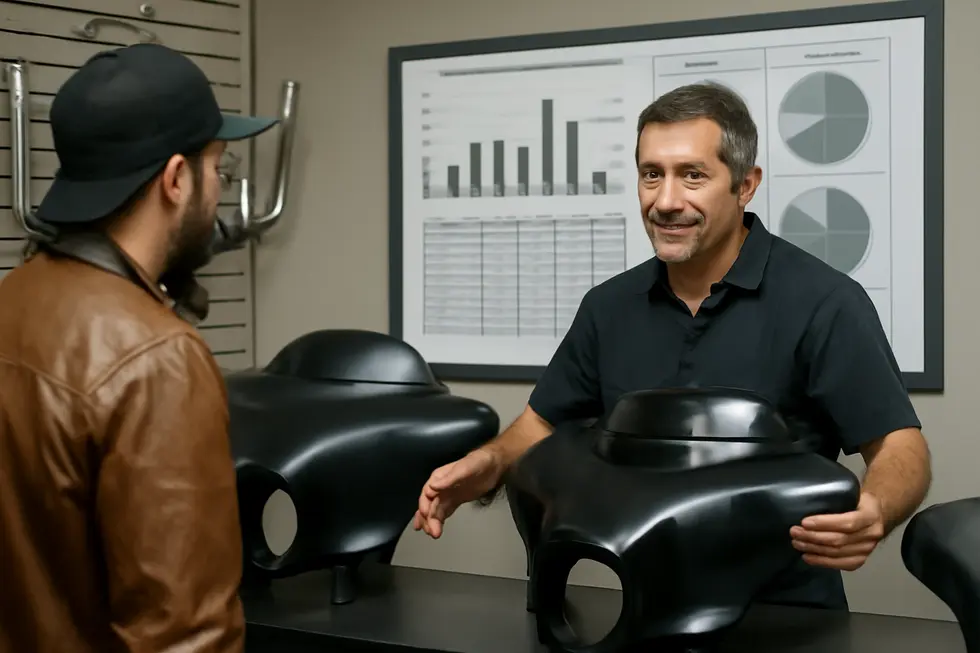
1. Navigating Design Complexities: Fit, Aerodynamics, and Durability in Batwing Fairings
Crafting motorcycle batwing fairings presents a unique blend of technical and aesthetic challenges that must be balanced carefully to satisfy touring enthusiasts. Achieving precise fitment is paramount, as these fairings attach directly to handlebars or frame components of specific models, most notably Harley-Davidson touring bikes. Variations in production years, subtle frame modifications, and aftermarket customization can complicate mounting and alignment, demanding that manufacturers supply model-specific brackets and hardware. Even minor inconsistencies can cause vibrations or misalignment, undermining both comfort and safety. Additionally, matching finishes like chrome can require custom adjustments from riders to preserve visual cohesion.
Aerodynamics plays a pivotal role in shaping batwing fairings to reduce wind buffeting and rider fatigue on long journeys. Unlike fixed fairings that attach to the frame, batwing fairings mount on handlebars and move with steering, creating a dynamic airflow challenge. Advanced modeling techniques, such as computational fluid dynamics (CFD), are employed in modern designs to optimize airflow around the rider and reduce drag without sacrificing the distinctive silhouette that defines these fairings. Integrating functional elements like LED lighting further tests aerodynamic balance, as seamless airflow must be maintained to avoid turbulence, noise, or instability.
Material durability is equally critical given the exposure to weather, vibration, and occasional impacts. Traditionally, manufacturers choose between fiberglass, ABS plastic, and aluminum, each with trade-offs. Fiberglass provides a high-gloss finish and rigidity but risks brittleness under sudden shocks. ABS plastic offers excellent impact resistance, lighter weight, and ease of customization, making it a popular choice—particularly for Harley-Davidson batwing fairings—while aluminum delivers superior strength and longevity at the expense of additional weight and cost. Selecting the optimal material requires balancing aesthetics, rider protection, and ease of repair.
Overall, the design of motorcycle batwing fairings demands meticulous engineering to accommodate model-specific fitments, harmonize aerodynamic efficiency with classic styling, and ensure long-term material resilience. These considerations drive innovation and rider satisfaction, underpinning the fairing’s crucial role in touring motorcycle performance and identity. For riders seeking insight into the variety of fairing options and compatible designs, exploring comprehensive motorcycle fairings resources can provide valuable guidance.
2. Balancing Rider Expectations and Market Competition in Batwing Fairing Design
Motorcycle batwing fairings must meet a complex mix of rider preferences, technical compatibility, and competitive pressures to succeed in today’s market. Enthusiasts often seek fairings that enhance their bike’s distinctive profile while delivering practical benefits like effective wind management. This balance requires manufacturers to focus on aesthetics that appear integrated—whether factory-fresh or customized—along with coverage that minimizes rider fatigue without sacrificing line of sight or control access. Increasingly, the demand for smart integration pushes producers to accommodate infotainment systems and advanced LED lighting, turning fairings into functional platforms rather than just airflow shields.
Compatibility remains a decisive factor shaping consumer choices and product viability. Each motorcycle model demands precisely engineered mounting solutions and internal clearances that align with existing mechanical and electronic components. Fairings designed for popular touring models must not only fit securely but also allow seamless installation of popular upgrades, such as 6.5″ speakers or bespoke storage accessories that contour perfectly to batwing shapes. As manufacturers introduce new engine configurations and suspension setups, ongoing refinement of fitment standards becomes essential to keep pace with bike evolution and rider expectations.
Within this technical and aesthetic framework, the competitive landscape is marked by specialization and brand loyalty. Widely recognized providers emphasize durable materials and adaptable finishes to cater both to riders wanting direct replacements and those customizing their machines. Original equipment manufacturers set high benchmarks by incorporating state-of-the-art features directly into their designs, compelling aftermarket producers to innovate with tailored solutions that complement or extend factory capabilities. Specialized accessory makers enrich the ecosystem with product lines that enhance convenience or audio experience while respecting the batwing’s aerodynamic and stylistic roles. Notably, emerging competitors in electric motorcycle segments introduce alternative design philosophies that contrast with traditional cruiser aesthetics, reflecting evolving rider values and market niches.
This intersection of consumer demands, compatibility precision, and varied competitive approaches shapes a dynamic marketplace where batwing fairings remain essential for touring motorcycle identity and function. For riders and manufacturers alike, understanding these factors is crucial to navigating choices and innovations within this specialized segment of motorcycle accessories.
For more insights on selecting the right fairings to meet both style and function, exploring detailed options at Summit Fairings offers a valuable resource.
Final thoughts
Motorcycle batwing fairings represent a unique intersection of aesthetic appeal, rider functionality, and aftermarket business opportunity. Their distinctive design not only strengthens brand identity but also addresses essential rider comfort and accessory integration needs, predominantly in the touring motorcycle segment spearheaded by Harley-Davidson. Material innovations, model-specific fitment, and evolving customization trends continue to shape the market landscape. For business owners, comprehending these factors enables more strategic inventory curation, marketing focus, and product development to meet the expectations of touring enthusiasts. By navigating compatibility nuances, investing in quality materials, and embracing accessory expansion, enterprises can confidently leverage the motorcycle batwing fairing niche to fuel growth and customer satisfaction.
Ready to elevate your ride? Summit Fairings delivers premium, custom-fit fairings that blend style and durability. Whether you’re chasing speed or turning heads, we’ve got your bike covered. Don’t wait—transform your machine today. Click, customize, and ride with confidence. Your perfect fairing is just a few clicks away. Act now!
About us
undefined
RELATED POSTS
View all

